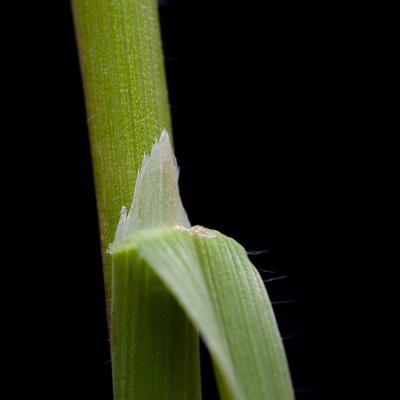Wild oat is a dominant arable grassweed, which impacts cereal yield in both autumn & summer.
Wild oats

What is wild oat?
Wild oats are some of the most dominant arable weeds and have been encouraged largely by the increase in autumn cropping. One wild oat plant/m2 can reduce yields by up to 1t/ha in winter cereals and up to 0.6t/ha in spring cereals.
Grassweeds like wild oats are largely confined in predominantly cereal growing regions of the UK. Wild oats are distributed from Yorkshire to Devon, and the intense arable areas of south and east Scotland.
Wild oat can be categorised into two forms: wild oat (Avena fatua) which germinates in both autumn and spring and winter wild oat (A. sterilis) which is typically autumn germinating and found on heavier soils.

Aggressive arable weed germinating from seed.
Winter wild oat germinates in the late autumn and winter, mainly between September and December, but wild oat is both spring and autumn germinating, although most seeds germinate in the spring between March and May.
Seed maturation before harvest spreads seeds and infestations can quickly exacerbate.
Emerging seedlings depend on correct soil moisture and temperature but can also be affected by cultivation and seed dormancy.
Germination can occur in both autumn and spring when temperatures are between 10-26°C. Wild oats are resistant to frost.
Ploughing can bury the seed deep in the soil inducing dormancy, which can remain viable for up to 10 years.
Seedbank half-life of 6 months.
How can I identify wild oats?

Fully Formed

Panicle

Ligule
Seedlings have an anti-clockwise twist, the leaf margins are hairier near the base, a membranous fairly long rounded ligule and no auricles.
The mature plant can grow up to 30-150 cm tall for wild oats, winter wild oats are stouter and taller at 60-180cm, with rounded stems and hairy leaves. There are no auricles, and the ligule itself is tall and rounded.
The seed head itself is an open panicle, and the spikelets contain 2-3 florets. The panicle may contain upwards of 250 awned seeds, which can range in colour all the way from black to white.
In wild oat the florets fall as single seeds, whereas in winter wild oat the seeds are joined drooping spikelets. The awn of the wild oat is between 25-40mm long and inserted around halfway up the lemma. The lemma is broader than the winter wild oat and end in two small teeth. In winter wild oats the lemma is narrower and the awn shorter than wild-oat, inserted below midway on the lemma.
Why is wild oat a problem?
Wild oat and winter wild oat are incredibly dominant arable grassweeds, and only 5 plants situated across a square metre is enough to produce a 5% yield loss.
Each plant can generate up to 200 seeds per plant. These seeds can remain viable in the soil for many years, up to 10 years in undisturbed soil and 4-5 years in cultivated land.
The net result is that in crops which are untreated, seed production can range from 1,000 to 10,000/m2 contributing to huge cereal crop losses.
Wild oat is spread easily by wild birds or in contaminated seed, straw and combines.
How do I control wild oats?
In conjunction with stale seed beds and delayed cultivation after harvest to allow seed predation; also burying the seed increases seed dormancy, then use:
Broadway Star Herbicide
Broadway® Star delivers outstanding performance in winter wheat against yield robbing grassweeds including wild oats, ryegrasses and bromes.
Palio Herbicide
Palio® delivers outstanding performance in winter wheat against yield robbing grassweeds including wild oats, ryegrasses and bromes.
Memphis Herbicide
Memphis® provides a robust solution for control of key grassweeds and broad-leaved weeds in winter wheat, winter rye, winter spelt and winter triticale.